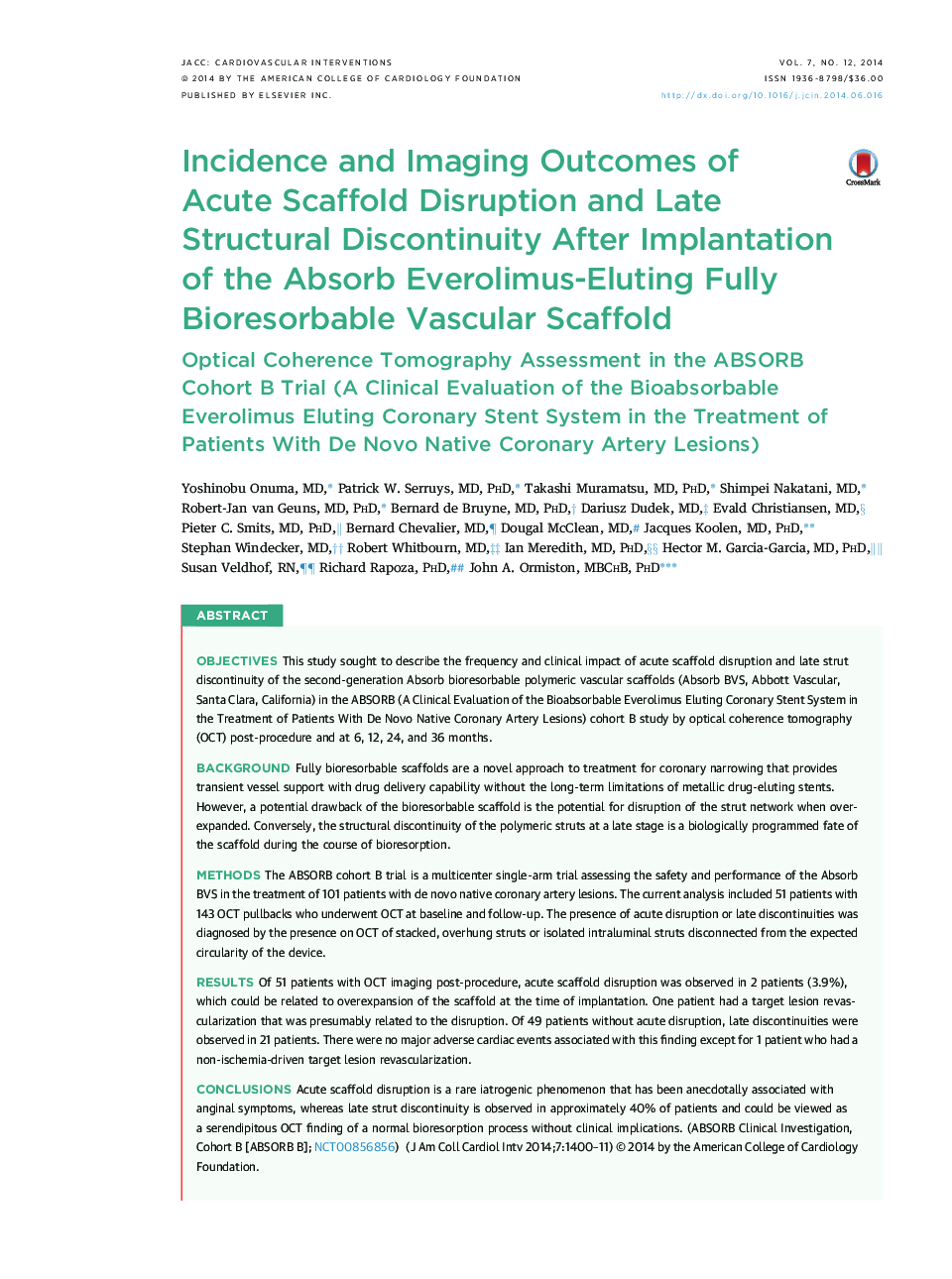| کد مقاله | کد نشریه | سال انتشار | مقاله انگلیسی | نسخه تمام متن |
|---|---|---|---|---|
| 5980613 | 1177008 | 2014 | 12 صفحه PDF | دانلود رایگان |

ObjectivesThis study sought to describe the frequency and clinical impact of acute scaffold disruption and late strut discontinuity of the second-generation Absorb bioresorbable polymeric vascular scaffolds (Absorb BVS, Abbott Vascular, Santa Clara, California) in the ABSORB (A Clinical Evaluation of the Bioabsorbable Everolimus Eluting Coronary Stent System in the Treatment of Patients With De Novo Native Coronary Artery Lesions) cohort B study by optical coherence tomography (OCT) post-procedure and at 6, 12, 24, and 36 months.BackgroundFully bioresorbable scaffolds are a novel approach to treatment for coronary narrowing that provides transient vessel support with drug delivery capability without the long-term limitations of metallic drug-eluting stents. However, a potential drawback of the bioresorbable scaffold is the potential for disruption of the strut network when overexpanded. Conversely, the structural discontinuity of the polymeric struts at a late stage is a biologically programmed fate of the scaffold during the course of bioresorption.MethodsThe ABSORB cohort B trial is a multicenter single-arm trial assessing the safety and performance of the Absorb BVS in the treatment of 101 patients with de novo native coronary artery lesions. The current analysis included 51 patients with 143 OCT pullbacks who underwent OCT at baseline and follow-up. The presence of acute disruption or late discontinuities was diagnosed by the presence on OCT of stacked, overhung struts or isolated intraluminal struts disconnected from the expected circularity of the device.ResultsOf 51 patients with OCT imaging post-procedure, acute scaffold disruption was observed in 2 patients (3.9%), which could be related to overexpansion of the scaffold at the time of implantation. One patient had a target lesion revascularization that was presumably related to the disruption. Of 49 patients without acute disruption, late discontinuities were observed in 21 patients. There were no major adverse cardiac events associated with this finding except for 1 patient who had a non-ischemia-driven target lesion revascularization.ConclusionsAcute scaffold disruption is a rare iatrogenic phenomenon that has been anecdotally associated with anginal symptoms, whereas late strut discontinuity is observed in approximately 40% of patients and could be viewed as a serendipitous OCT finding of a normal bioresorption process without clinical implications. (ABSORB Clinical Investigation, Cohort B [ABSORB B]; NCT00856856)
Journal: JACC: Cardiovascular Interventions - Volume 7, Issue 12, December 2014, Pages 1400-1411